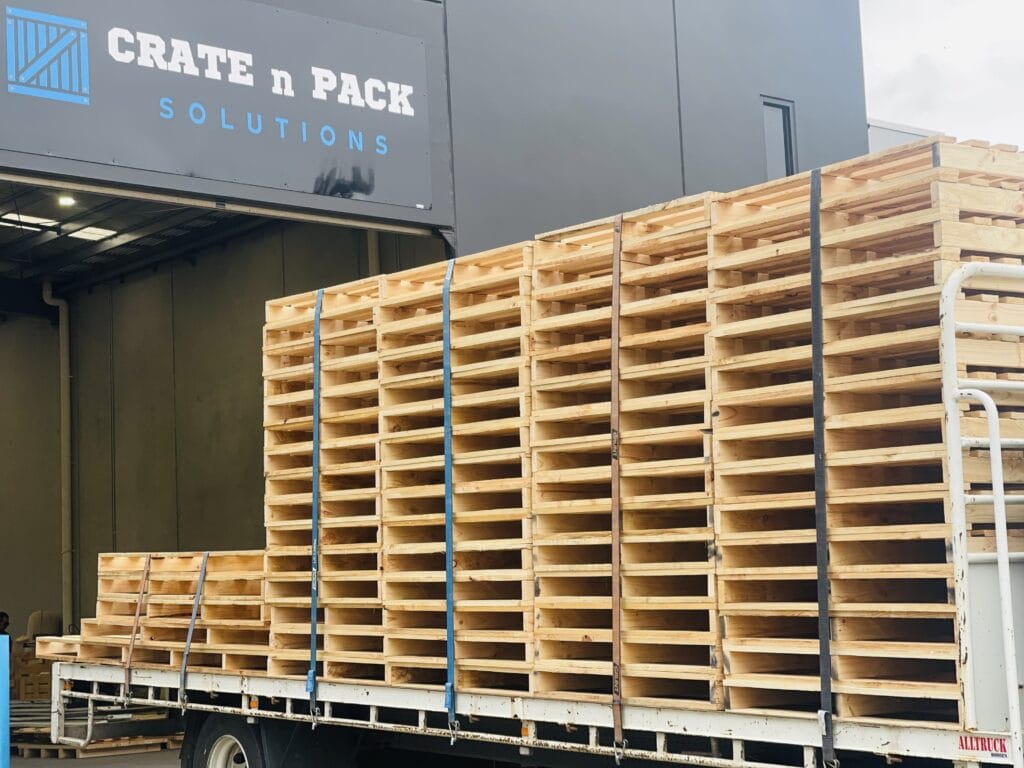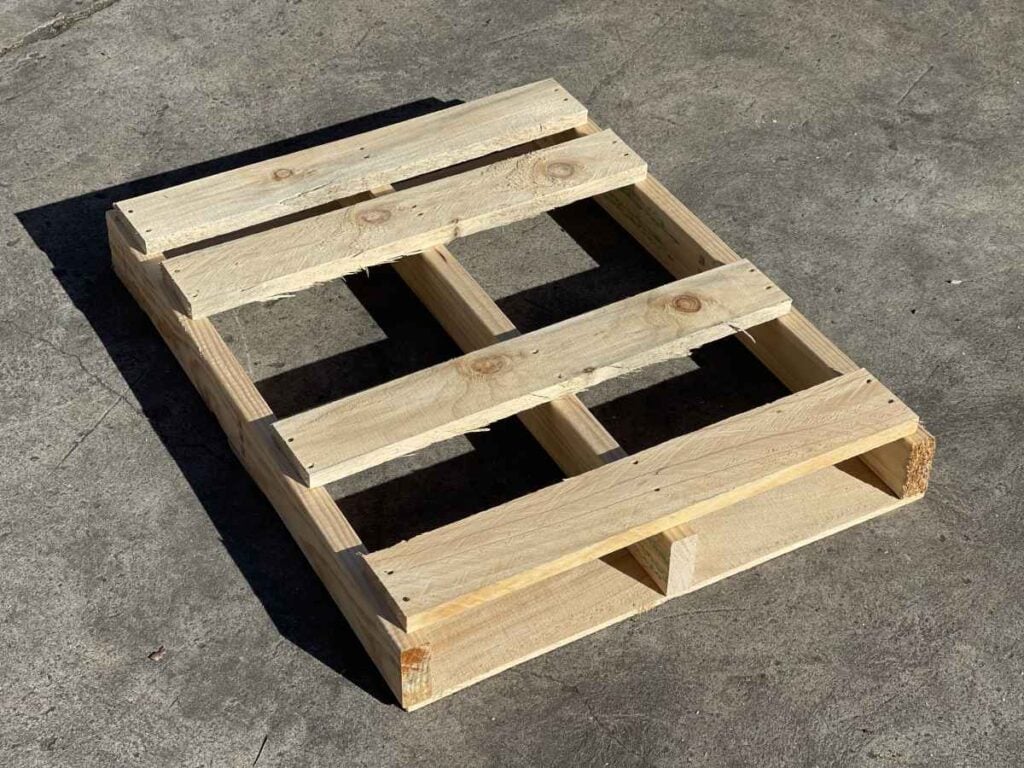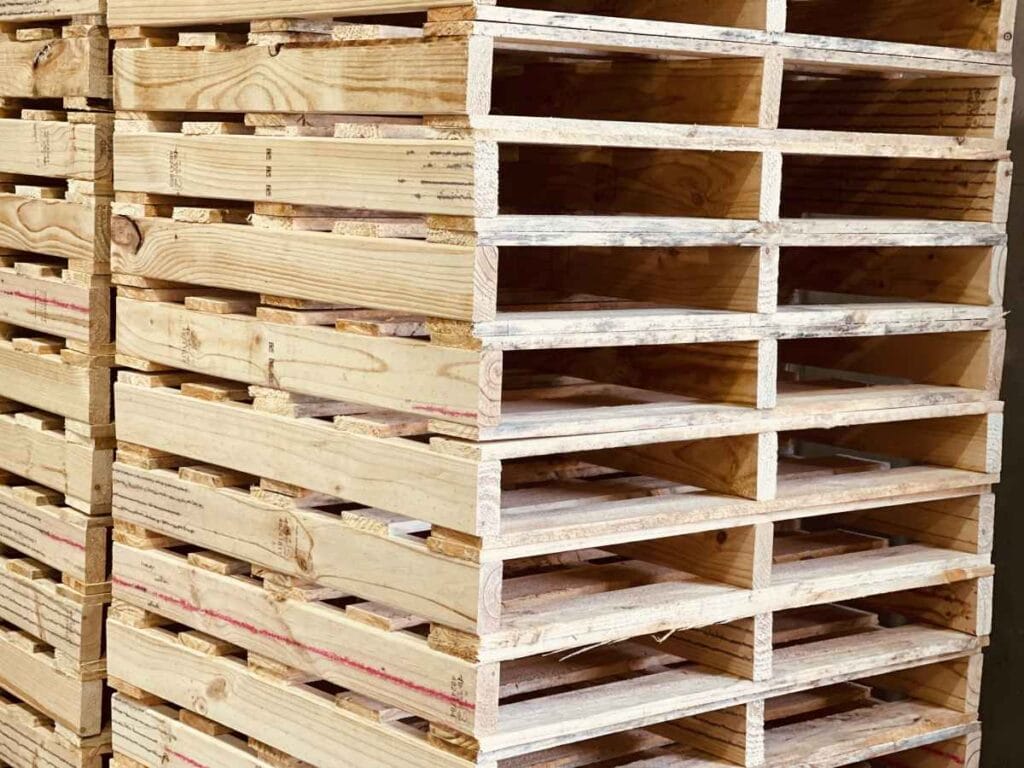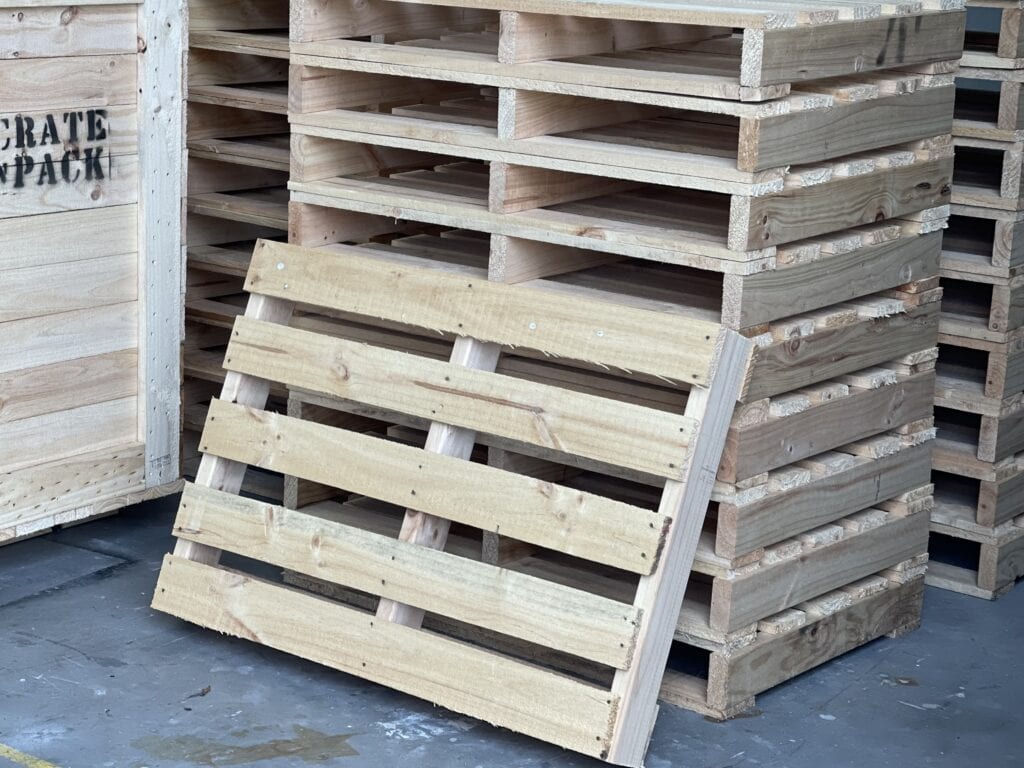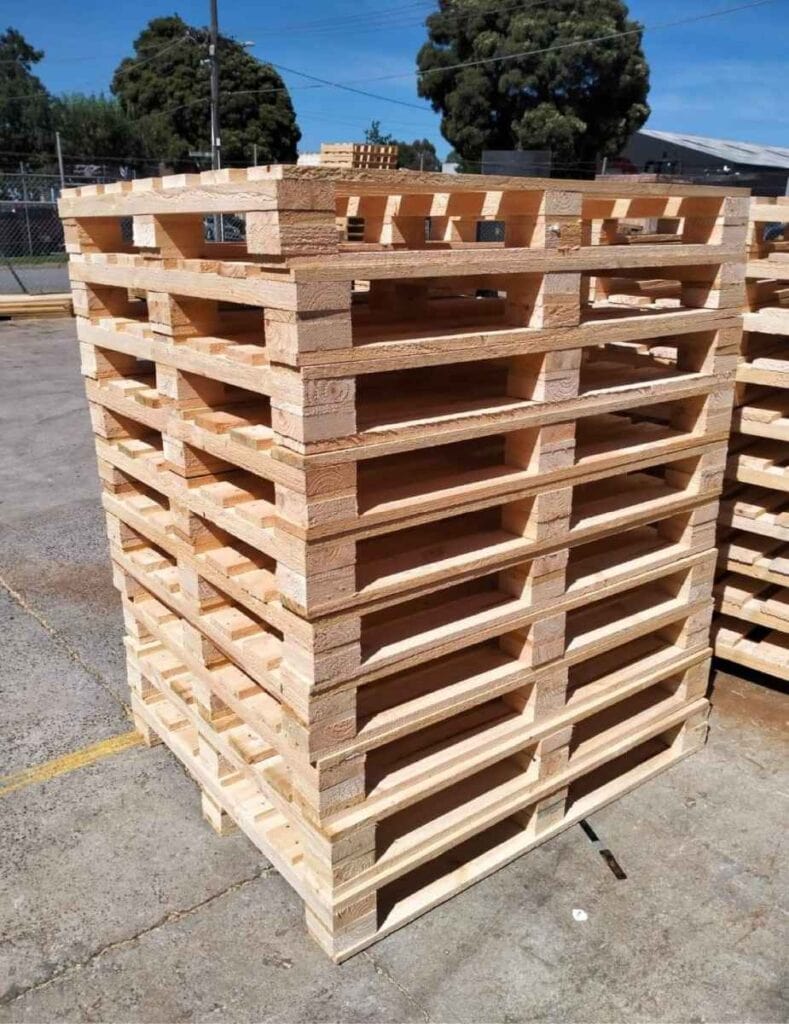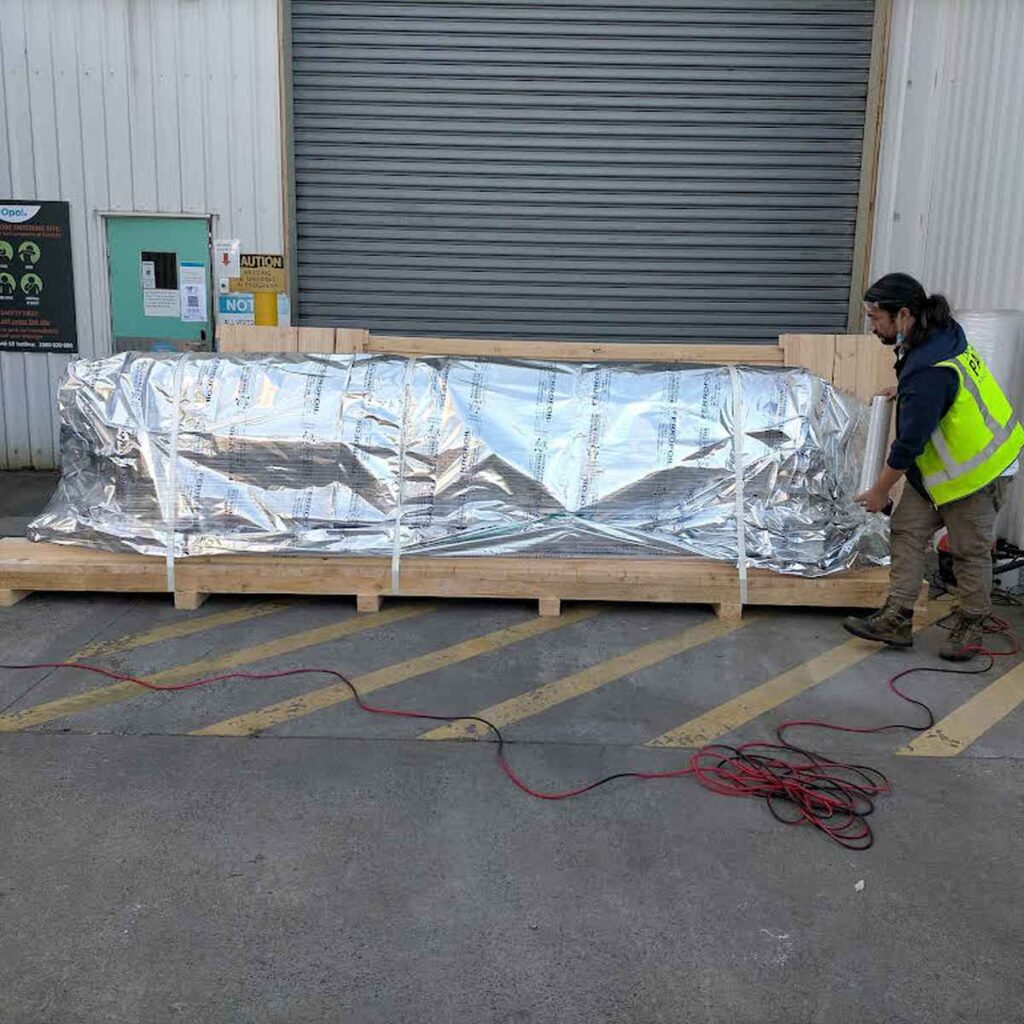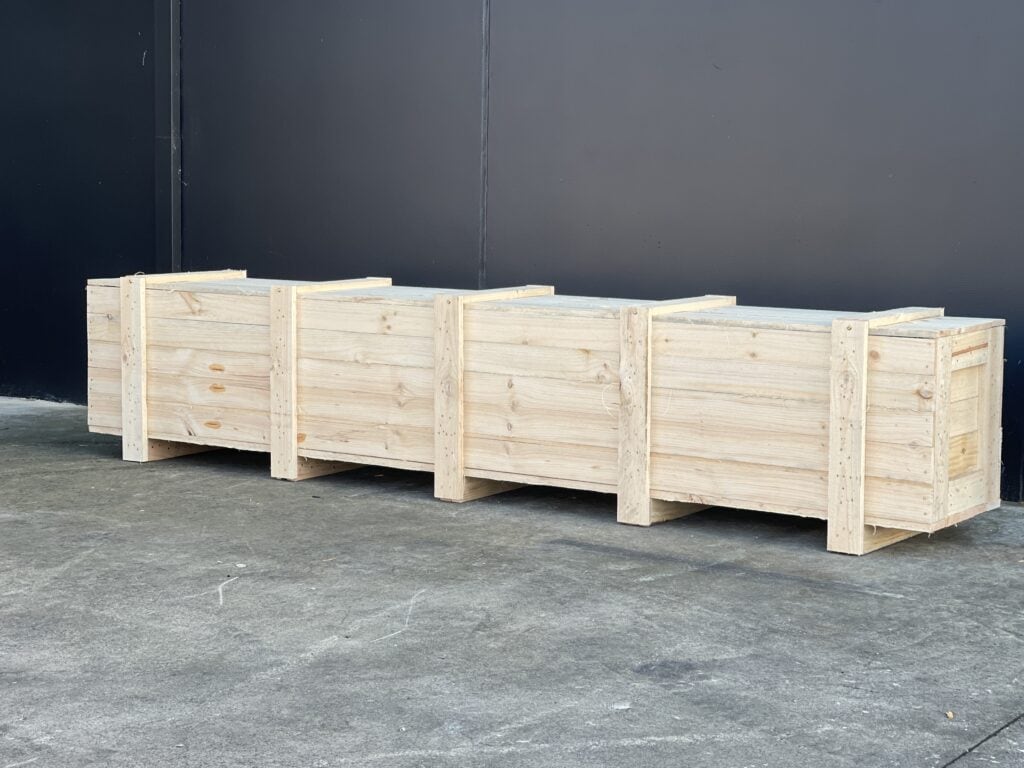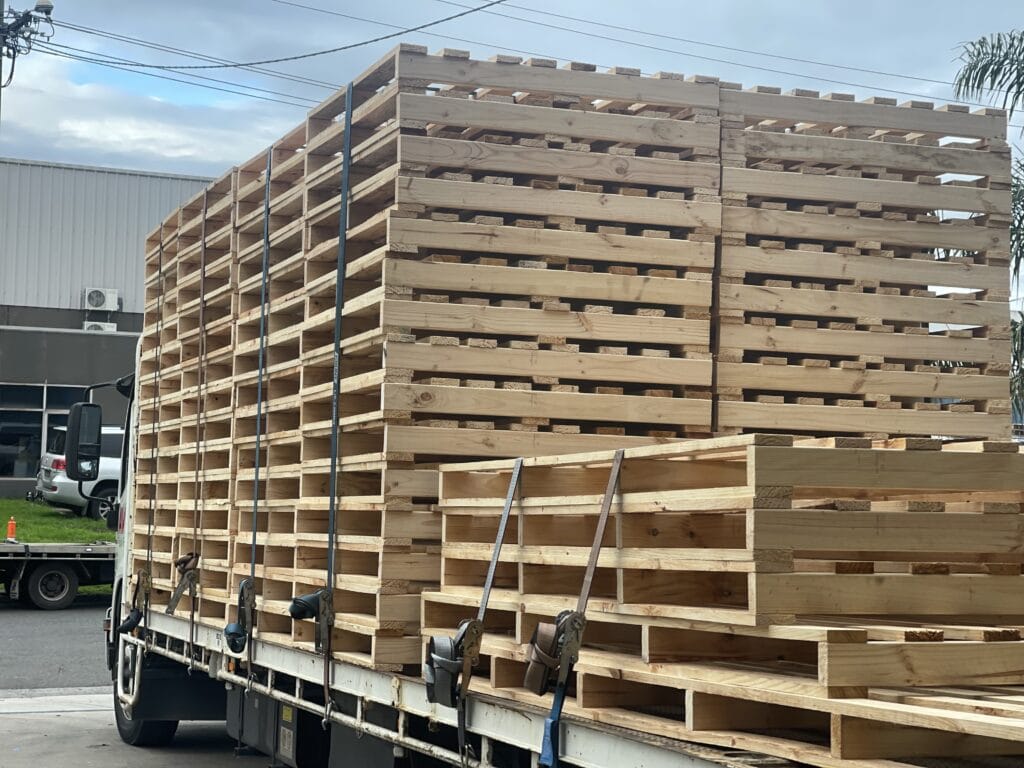Learn how to pack wooden pallets to maximise protection, productivity, and economy. To succeed in business, you must master the art of pallet packing.
The industrial sector is the same with the use of wooden pallets. These dependable workhorses bear the weight of an infinite number of products, guaranteeing that those products arrive at their destination in undamaged condition. Yet, it is vital to be aware of the most effective way to pack wooden pallets to guarantee the security of the shipment of goods.
To help you optimise your pallet packing process, this guide will examine the best practices, including providing you with expert views and helpful ideas.
Understanding The Importance Of Proper Pallet Packing
Let's talk about why properly packing wooden pallets is such an important part of warehouse management before we go into the specifics of how to do it.
- Minimising Damage: The potential for product damage during handling and transport is mitigated when pallets are packed and secured appropriately. This will result in cost savings and contented patrons.
- Maximising Space: You will be able to store more products and enhance your storage capacity without having to enlarge your facility if you pack your pallets efficiently. This will help you make the most of the space available in your warehouse.
- Streamlining Operations: Pallets that are well-organised are simpler to move about, load, and unload, which makes your warehouse operations more effective and reduces the amount of labour expenditures.
- Enhancing Safety: Packed Pallets help provide a safer working environment for your staff and reduce the likelihood that they will be injured in an accident.
Now that we understand the significance of it let's investigate the measures that need to be taken in order to pack wooden pallets effectively.
Pallet Packaging Instructions
Effectively using wooden pallets for shipping requires more than randomly piling goods on each other. It calls for meticulous preparation and execution. Step-by-step instructions on how to properly pack wooden pallets are provided below.
Select The Right Pallets
When packing items using pallets, the first step is to select sturdy wooden pallets carefully. These pallets must be sturdy enough to support the mass and dimensions of your goods properly.
It is critical to match your pallet selection to the specific needs of your inventory and the limitations of your storage space. By carefully picking your pallets, you can rest assured that your items will have a firm base upon which to be packed and transported safely.
Plan Your Layout
Pallet loading should only begin when careful planning of the pallet's layout has been completed. The heaviest items should go in the bottom, and the rest should be properly distributed to provide stability. This clever setup keeps the pallet from becoming top-heavy and dangerously unstable.
You can protect your goods and reduce the likelihood of accidents and damage during handling and transportation by maintaining an even distribution of weight. Such meticulous planning is fundamental to effective pallet packing, which in turn improves warehouse security and productivity.
Stack In A 'Bricklayer Style'
The heaviest items should be placed at the bottom of the pile for efficient and secure delivery. A secure platform with a reduced centre of gravity is guaranteed, and lightweights are safeguarded from being crushed in the process.
If you want to keep your stack of boxes safe and undamaged during transport, you should keep as little space as possible between them.
The "bricklayer pattern" of stacking boxes is a tried-and-true method for providing extra support. In this technique, the boxes are stacked on the pallet in a pattern that evokes brickwork.
All of the boxes on the bottom layer must face the same direction and be stacked in vertical columns. Change the direction the columns are pointing by 180 degrees for the next layer. The stack will remain strong and stable after being fastened down and shrink-wrapped if the configuration is constantly alternated in this manner.
Avoid stacking boxes in a pyramid shape at all costs, as this arrangement reduces shipment stability and makes packing more difficult.
Be Careful Not To Overhang
Exceeding the edges of the base unit load when packing boxes poses significant risks, such as compromised item safety and reduced load stability. Even minor overhangs can jeopardise the safe delivery of goods, incurring additional costs and potentially damaging a company's reputation.
Therefore, it is advisable to select a pallet that is slightly larger than initially estimated to ensure that all boxes fit entirely within its dimensions.
Customised timber pallets can be crafted to meet specific organisational requirements, offering an added layer of precision to the packing process. When it comes time to prepare the shipment, boxes should be positioned as close to the pallet edges as feasible without actually exceeding those boundaries.
Once suitably placed, boxes should be securely fastened using straps to maintain stability during transit.
Shrink Wrapping

When one has completed stacking pallets and is satisfied with the arrangement, a protective covering is applied. For an efficient seal, it is essential to completely enclose the stack, including the pallet's base.
High-quality shrink wrap, applied in numerous layers, effectively binds the pieces together, greatly limiting the possibility of any elements going adrift.
When applying shrink wrap, it's best to be safe than sorry and use plenty of it to ensure the package doesn't get damaged in transit. First, secure one end of the shrink wrap to the underside of the pallet.
The next step is to meticulously and systematically work your way around the pallet, moving upwards and across its entire wooden framework.
The tensile strength of the wrap can be increased by putting it in a twisted, rope-like fashion and overlapping it by at least half its breadth. Use high-quality shrink wrap and wrap your products multiple times to provide a strong barrier against the weather. The wrapping will make the boxes look less like a collection of individual parts and more like a unified whole.
Attaching All Labels
The labels should be applied once each item has been loaded onto the appropriate pallet. Affix the labels on the loaded and wrapped pallets, taking care that any handwritten labels are legible.
Typically, you are responsible for printing out the necessary shipping labels and affixing them to your pallets before they are collected.
However, what if you don't have access to a printer? You can write your shipping labels by hand on a piece of blank paper that is A4 size if that is more convenient for you. Make sure this incorporates all the information found on the virtual label.
When it comes to assisting the driver in determining where each pallet is heading, affixing all labels is necessary.
If a label is not affixed to a pallet, the courier will not transport it through their network, and the driver will not pick it up. In light of this, name your pallets before they are collected. The driver won't have to wait around while you attach your labels, speeding up the collecting process.
Safely Secure
Securing goods adequately to the pallet greatly enhances their stability and protection as they journey towards their final destination.
The employment of two straps on each side of the pallet significantly bolsters the shipment's security, thereby increasing the likelihood of the items reaching their end point intact.
Various materials such as steel, rayon, polypropylene, and polyester are suitable choices for packing straps. The selection ought to be tailored to one's specific needs and preferences.
For maximum security, these durable and robust packing bands should be threaded through both the top and bottom deck boards of the pallets, encircling the boxes, all before the application of the shrink-wrap layer.
Should there be any concerns regarding the safety of the cargo, additional protective measures can be taken. For instance, slip sheets crafted from cardboard can be strategically placed between the rows of boxes, and solid cardboard corners may be used for stacking the boxes. These supplementary steps further fortify the entire shipment, contributing to an even more secure transit.
Common Mistakes In Pallet Packing
You can't take pallet packing lightly. The stability of the entire shipment could be compromised with just one erroneous manoeuvre, putting the cargo at risk. Check out this collection of examples of bad pallet packing rather than trying it alone.
Mistake #1: Picking The Incorrect Pallet
Packing on a pallet begins with the pallet, the primary support structure of your package. While it can save money, reusing outdated pallets for your shipments can cause problems if you don't check their stability first.
Don't use pallets with splintered planks or nails sticking out of the wood.
Problems can also arise when an alternative material pallet is used. Although wooden pallets have traditionally been used, aluminium, plastic, and corrugated pallets have recently made their way into the market as viable alternatives.
It's important to note that not all pallets are the same. Though these pallets are useful in certain niche applications, they are only ideal for transporting some cargo due to weight, mobility, and pallet strength concerns. Do your homework before attempting to sway from wooden pallets.
Mistake #2: Stacking Incorrectly
The only consideration when deciding how to stack your cartons is whether or not they would fit on the pallet. However, failing to adhere to several best practices that boost strength can be disastrous. When packing items onto a pallet, if the weight is not distributed uniformly and the heaviest boxes are not placed at the bottom, this can quickly increase the likelihood that the pallet will be damaged. Another typical error that might leave your cargo vulnerable is making use of pallets that need to be bigger.
When packing your pallet, the order in which you stack items is just as crucial as the number of items you pack. Pyramid stacking is a major problem. The top boxes on a pallet loaded in this way are in greater danger of damage, and the load is less stable. Aligned columns are preferable whenever it is possible. Stacking your pallet so it is flat and level is the best approach to protect it from damage.
Mistake #3: Individual Boxes Not Being Packed Properly
When getting ready to stack pallets, it is necessary to concentrate on packing each box or carton with extreme care. It doesn't matter how well your boxes are stacked on the pallet; the contents inside may move about while in transit. Overstuffing these cartons without proper impact protection is a common mistake made by shippers.
You may reduce this risk by using boxes of the appropriate size, which provide adequate space for the product while also providing the required level of protection from drops. Extra padding, such as paper pads or packing peanuts, is required to keep products from getting damaged in transit if they are larger than the optimal size.
Mistake #4: Skimping On Stretch Wrap
If you're not using a stretch wrap machine, you'll want to be extra careful with your wrapping method. Keep an eye out for typical blunders that could endanger the safety of your pallet load. First and foremost, make sure that you adequately wrap around the pallet. For maximum protection, it is advised that you wrap at least five times around the entire shipment.
Second, remember how crucial it is to twist the wrap. One common mistake is to avoid twisting the wrap at every other round. This increases the wrap's longevity and strengthens your pallet's stability, protecting your goods from movement and damage on the road.
Conclusion
This guide gives expert advice on how to pack wooden boards so that they are as safe, productive, and cost-effective as possible. Properly packing pallets is important for warehouse management because it reduces damage, makes the best use of space, speeds up processes, and makes things safer.
Properly packing pallets is important for managing a building, reducing damage, making the most of space, streamlining operations, and improving safety.
Labels should be put on each item after it has been put on the right rack, and they should be easy to read. You can write your shipping labels by hand on A4-sized paper if you don't have access to a computer. Make sure that all signs are on the pallets so that the driver can figure out where they are going.
Use two straps, one on each side of the box, made of steel, rayon, polypropylene, or polyester, to hold the goods safely in place. Before putting on the shrink-wrap layer, thread these bands through both the top and bottom deck boards of the boxes for the most security. If there are worries about the safety of the cargo, extra steps can be taken to protect it, such as using slip sheets or cardboard corners that don't bend.
When packing pallets, people often need help with choosing the wrong pallet, putting it wrong, packing individual boxes wrong, or not using stretch wrap. To make sure the whole package stays stable, don't use old pallets, stack the boxes wrong, or pack each box with extra padding.
Make sure that the weight is spread out evenly on the pallets and that the largest boxes are at the bottom. Use boxes that are the right size and add extra padding to keep things from getting broken during shipping. Skipping the stretch wrap can also put the load's safety at risk.
The security and safety of your shipment depend on how well your pallets are packed. After placing the pallets and being happy with how they are arranged, the next step is to cover them to protect them. To make a good seal, it is important to wrap the stack tightly, including the bottom of the box. For the best protection, you need to use multiple layers of high-quality shrink wrap, which binds the things together and makes it much less likely that anything will come loose.
When it comes to using shrink wrap, it is always best to err on the side of caution and use a lot of it to keep the shipment's integrity. Start wrapping by attaching one corner of the shrink wrap to the base of the box. Then, go around the pallet in a methodical way, making your way up and across the whole wooden frame.
To make the wrap stronger, spread it by at least half its width and think about putting it on in a rope-like way. Use high-quality shrink wrap and wrap your items three to five times to make a strong shield between them and the outside world. Once they are wrapped, the boxes will work more like a single unit than a bunch of different parts.
Tarpaulins or dust cover sheets are highly suggested for extra protection against things like dust, dirt, and changing weather conditions. These covers are the first line of defence to keep outside contaminants from getting into the shipment. Since it's up to the sender to make sure that all of the shipping steps are done carefully, it's a good idea to give this process enough time to be done well and safely.

Content Summary
- Mastering the art of pallet packing is crucial for business success, especially in the industrial sector.
- Wooden pallets are the workhorses of the industrial sector, bearing the weight of numerous products.
- Proper pallet packing is essential to ensure goods arrive at their destination undamaged.
- Minimising product damage through correct pallet packing results in cost savings and satisfied customers.
- Efficiently packed pallets maximise storage space in your facility without the need for expansion.
- Well-organised pallets streamline warehouse operations, cutting down on labour costs.
- Adequately packed pallets enhance workplace safety and reduce accident risks.
- Pallet packing isn't just about stacking goods; it requires meticulous planning and execution.
- Selecting sturdy wooden pallets is the first step in secure packing.
- Pallet selection should align with the specific needs of your inventory and available storage space.
- Planning the layout of goods on the pallet is essential before initiating the loading process.
- Placing the heaviest items at the bottom of the pallet helps maintain stability.
- An even distribution of weight on the pallet minimises the likelihood of accidents during transportation.
- Stacking goods in a 'bricklayer style' offers additional support and stability.
- Using the 'bricklayer pattern,' alternating the direction of box columns fortifies the stack.
- Avoid pyramid stacking, as it reduces shipment stability and complicates packing.
- Overhanging boxes beyond the pallet edges compromises the safety of the shipment.
- Choosing a pallet slightly larger than estimated prevents overhang issues.
- Customised timber pallets can offer precision to your packing process.
- Boxes should be fastened securely with straps for stability during transit.
- The application of shrink wrapping binds the boxes and pallets into a unified whole.
- Multiple layers of high-quality shrink wrap minimise the risk of elements going adrift.
- Twisting the wrap and overlapping it by at least half its width increases tensile strength.
- Labels should be affixed to each packed and wrapped pallet for shipping.
- Clear and legible labels speed up the collection process and assist the driver in delivery.
- Failing to attach labels means the courier won't transport the pallet, causing delays.
- Steel, rayon, polypropylene, and polyester are suitable materials for packing straps.
- The type of packing straps should be chosen based on specific needs and preferences.
- Threading straps through both top and bottom deck boards before shrink-wrapping enhances security.
- Concerns about cargo safety can be addressed with additional protective measures like slip sheets.
- Strategically placed cardboard slip sheets between rows offer extra protection.
- Solid cardboard corners can be used for safer stacking of boxes.
- Avoid reusing old or damaged pallets to prevent compromising shipment stability.
- Using alternative material pallets like aluminium or plastic requires careful consideration.
- The error of stacking incorrectly could compromise the entire shipment.
- Uniform weight distribution is key to reducing the risk of pallet damage.
- Stacking items in aligned columns is preferable for enhancing shipment safety.
- Each individual box should be packed with extreme care before stacking on the pallet.
- Overstuffing individual cartons without proper impact protection is a common mistake.
- Adequate space and padding inside the box offer an added layer of protection.
- Skimping on stretch wrap could endanger the safety of your pallet load.
- At least five wraps around the entire shipment offer maximum protection.
- The wrap should be twisted at every other round to increase its longevity.
- Properly wrapped and secured pallets are more likely to reach their destination intact.
- Labels with all the essential information should be attached to ensure correct delivery.
- Handwritten labels can be used if a printer is not available, as long as they are legible.
- Failure to name pallets before collection can slow down the shipping process.
- The bricklayer stacking pattern is proven to be effective in keeping the pallet load stable.
- The objective of pallet packing is not just fitting items but ensuring they arrive undamaged.
- Understanding common mistakes in pallet packing can help avoid risks and protect your cargo.
Frequently Asked Questions
Yes, wooden pallets can be reused multiple times if they are well-maintained and not damaged. Regular inspections and repairs can extend their lifespan.
Wooden pallets come in various weight capacities. It's crucial to select pallets that match the weight of the products you intend to load. Exceeding the weight limit can lead to pallet failure.
The maximum stack height depends on the type of pallet, its structural integrity, and the weight of the products. Typically, staying within a stack height of 72 inches is recommended.
To prevent pallets from slipping, use anti-slip mats or friction-enhancing materials between the pallets and the cargo. This helps maintain stability during transit.
Alternatives to wooden pallets include plastic, metal, and composite pallets. Each has its advantages and disadvantages, depending on your specific needs.

